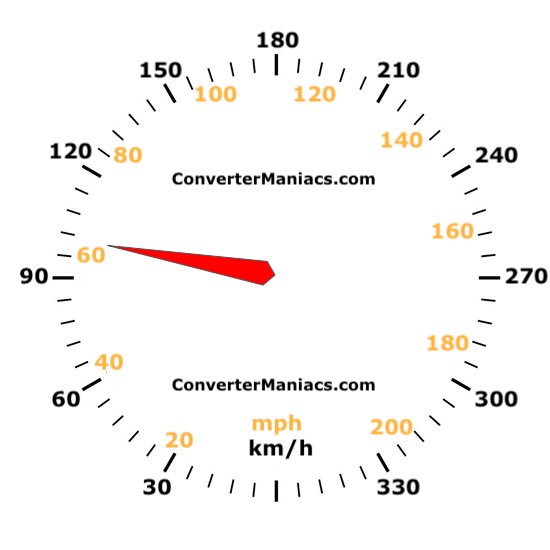How Fast is 100 km/h?

The concept of speed is an integral part of our daily lives, especially when it comes to transportation and travel. Whether we're driving, flying, or even just discussing the weather, speed measurements are a common language that helps us understand and compare various phenomena. In this article, we delve into the world of speed and specifically explore the implications and context of traveling at a speed of 100 kilometers per hour (km/h), a speed that holds significance in various aspects of our lives.
Understanding the Speed of 100 km/h

100 km/h is a speed that many of us encounter frequently. It is a common speed limit on highways and roads around the world, especially in countries that use the metric system for measurements. This speed is often considered a safe and comfortable cruising speed for vehicles, providing a balance between efficiency and control.
To put this speed into perspective, 100 km/h is equivalent to approximately 62.14 miles per hour (mph). This conversion is crucial for understanding how this speed compares to other measurement systems used globally. It's worth noting that while 100 km/h might be a common speed limit, the actual speed at which vehicles travel can vary based on traffic conditions, road infrastructure, and driver behavior.
Real-World Context and Implications
Traveling at 100 km/h has several practical implications and considerations:
- Road Safety: This speed is often considered a reasonable limit for various road conditions. It allows drivers enough time to react to potential hazards and maintain control over their vehicles. However, it's essential to note that factors like weather, road curvature, and visibility can significantly impact the safety of traveling at this speed.
- Travel Time: At 100 km/h, the time taken to cover a certain distance can be calculated. For instance, traveling 100 kilometers at this speed will take approximately one hour. This estimation can be crucial for planning journeys and ensuring timely arrivals.
- Fuel Efficiency: Different vehicles have varying fuel efficiency levels at different speeds. Generally, vehicles tend to be most fuel-efficient within a specific range of speeds, and 100 km/h might fall within this range for many modern automobiles.
- Environmental Impact: The speed at which vehicles travel can impact their carbon footprint. Higher speeds often lead to increased fuel consumption and, consequently, higher emissions. Thus, adhering to speed limits like 100 km/h can contribute to reducing the environmental impact of transportation.
Furthermore, the speed of 100 km/h has legal implications. In many jurisdictions, exceeding this speed limit can result in fines, demerit points, or even license suspensions. These legal repercussions are designed to encourage safe driving practices and deter speeding, which is a significant factor in road accidents.
Comparative Analysis
Comparing 100 km/h to other common speeds can provide further context:
| Speed | Description |
|---|---|
| 50 km/h | A common speed limit in urban areas, ensuring safety and ease of maneuverability. |
| 80 km/h | Often seen as a transitional speed limit between urban and highway driving. |
| 120 km/h | A typical speed limit for many highways, providing a balance between travel time and safety. |
| 160 km/h | This speed is uncommon on public roads but might be encountered on certain stretches of German autobahns, where there is no universal speed limit. |

These comparative analyses highlight the role that different speed limits play in ensuring road safety and managing traffic flow.
Future Implications and Innovations

As technology advances, the role of speed in transportation is evolving. Here are some future implications and innovations related to speed:
- Autonomous Vehicles: Self-driving cars are expected to revolutionize transportation. These vehicles might operate at optimized speeds, taking into account real-time traffic data and road conditions to ensure efficient and safe travel.
- Electric Vehicles: With the rise of electric vehicles, the focus is shifting towards optimizing energy efficiency. This might lead to a reevaluation of traditional speed limits, as electric vehicles often have different performance characteristics.
- Smart Highways: The development of smart highways with dynamic speed limits could be a game-changer. These highways might adjust speed limits based on weather conditions, traffic flow, and accident rates, providing a safer and more efficient transportation system.
The Role of Technology in Speed Regulation
Technology is playing an increasingly crucial role in speed regulation and safety. Advanced driver-assistance systems (ADAS) are becoming more common, offering features like adaptive cruise control, which automatically adjusts vehicle speed to maintain a safe following distance. Additionally, technologies like GPS and real-time traffic data are helping drivers make informed decisions about their speed and route choices.
Furthermore, speed cameras and other enforcement technologies are becoming more sophisticated, helping authorities monitor and regulate speeds more effectively. These technologies contribute to ensuring that speed limits like 100 km/h are respected and that roads remain safe for all users.
Conclusion
The speed of 100 km/h is a familiar and significant speed for many of us. It represents a balance between efficiency and safety on our roads. As we continue to innovate and advance in transportation, the role of speed and its regulation will evolve. From autonomous vehicles to smart highways, the future of transportation is exciting and holds the promise of safer, more efficient travel.
How does 100 km/h compare to other common speed limits worldwide?
+
Speed limits vary globally. In the US, highway speed limits typically range from 55 mph to 75 mph, while in the EU, speed limits on highways can vary from 80 km/h to 130 km/h. Thus, 100 km/h falls within the middle range of these limits.
What are the potential consequences of exceeding the 100 km/h speed limit?
+
Exceeding the speed limit can lead to fines, demerit points, or even license suspensions. It also increases the risk of accidents and can result in higher fuel consumption and emissions.
How does speed impact the overall safety of a journey?
+
Speed plays a crucial role in safety. Higher speeds reduce the time available for drivers to react to potential hazards, increasing the risk of accidents. Adhering to speed limits like 100 km/h is essential for maintaining a safe driving environment.



